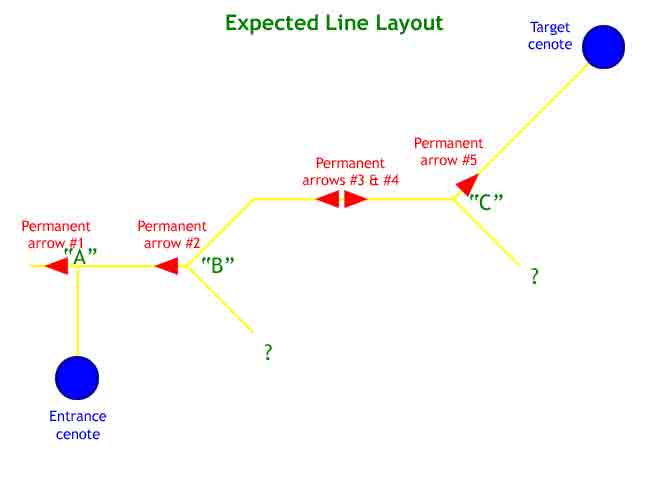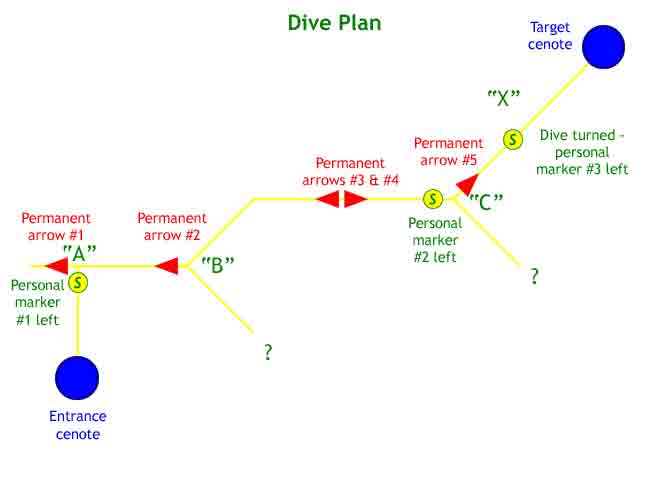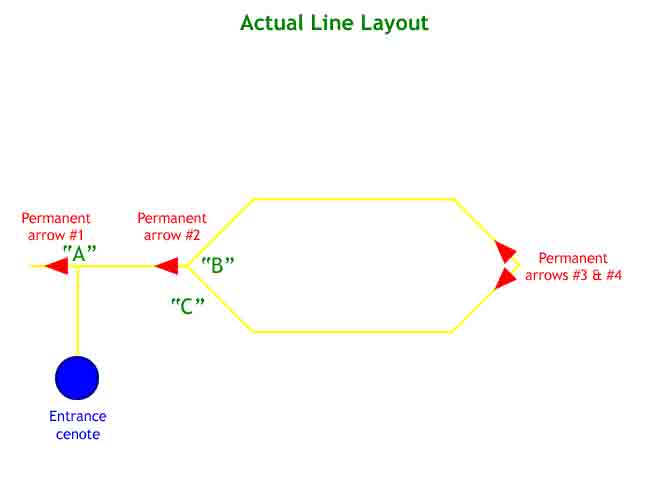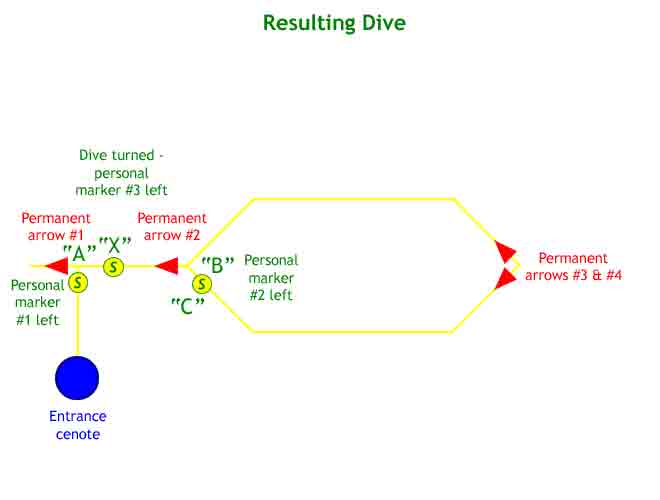The Cave Conundrum

| Cave Formation | |||
| Training & Safety | |||
| Equipment | |||
| Projects | |||
| Papers | |||
| Photos | |||
| Video | |||
| Links | |||
| Contact Us | |||
Multiple Ts Example:
1. As for the first example, a team of divers is planning to do a set-up for a future traverse between two cenotes. They have been told that the line layout is like this. Note that again we are just interested in the setup dive, not what happens when they try the traverse.

2. They still aren't going to do a blind dive, so they plan to mark their route like this. The key points are (1) they will turn right at the first T they arrive at, and then left at each of the next two Ts they arrive at, (2) that they will leave markers at the first and third Ts because the arrow will not be pointing towards their entrance, and (3) that they will leave a marker when they hit their turn pressure and turn the dive. Because this is a setup dive for a traverse from the second cenote, they will of course leave the markers in place.

3. Either they have received bad information, or someone has changed the lines. The actual layout is like this.

4. No matter. They will follow the navigation rules taught to them on their cave course, and all will be fine. Their resulting dive looks like this.

Commentary
1. This is essentially the first example, with an extra T before the loop.
2. Now when the divers loop back to the second T and see their personal marker, it all gets very interesting. With the personal marker on it, this T looks just like the first T. At the second T they would turn right, and at the first T they would follow their marker and turn left.
3. What should they do? They have to consider the possibility that they simply skipped over the second T without noticing or remembering it - quite possible as it had no personal marker on it. Should they: (1) go back and check whether they missed the second T, (2) trust that this really is the second T, and follow the arrow and not their marker, or (3) assume that this must be the first T, and follow their marker? Interesting ...
4. Now take a look at the jump line example.
Simon Richards, July 28, 2003
